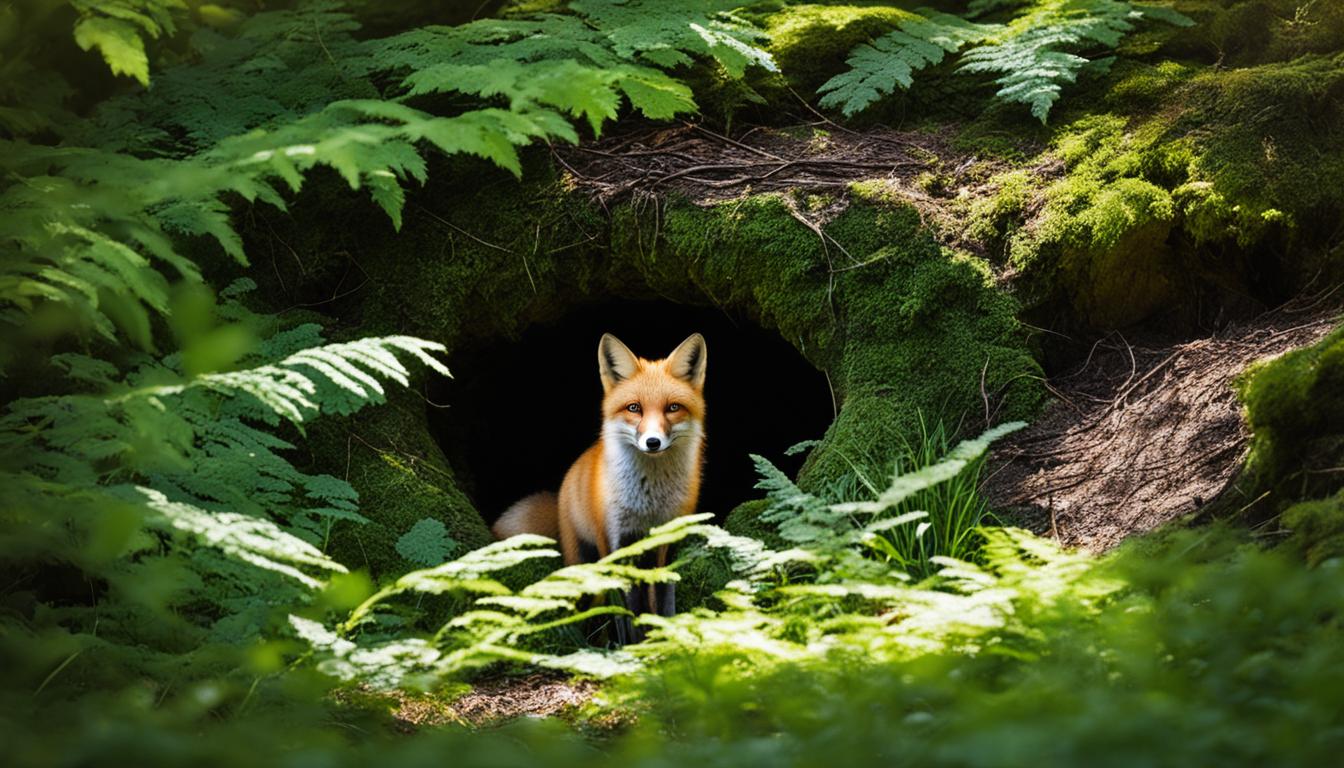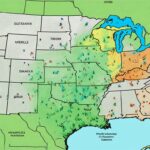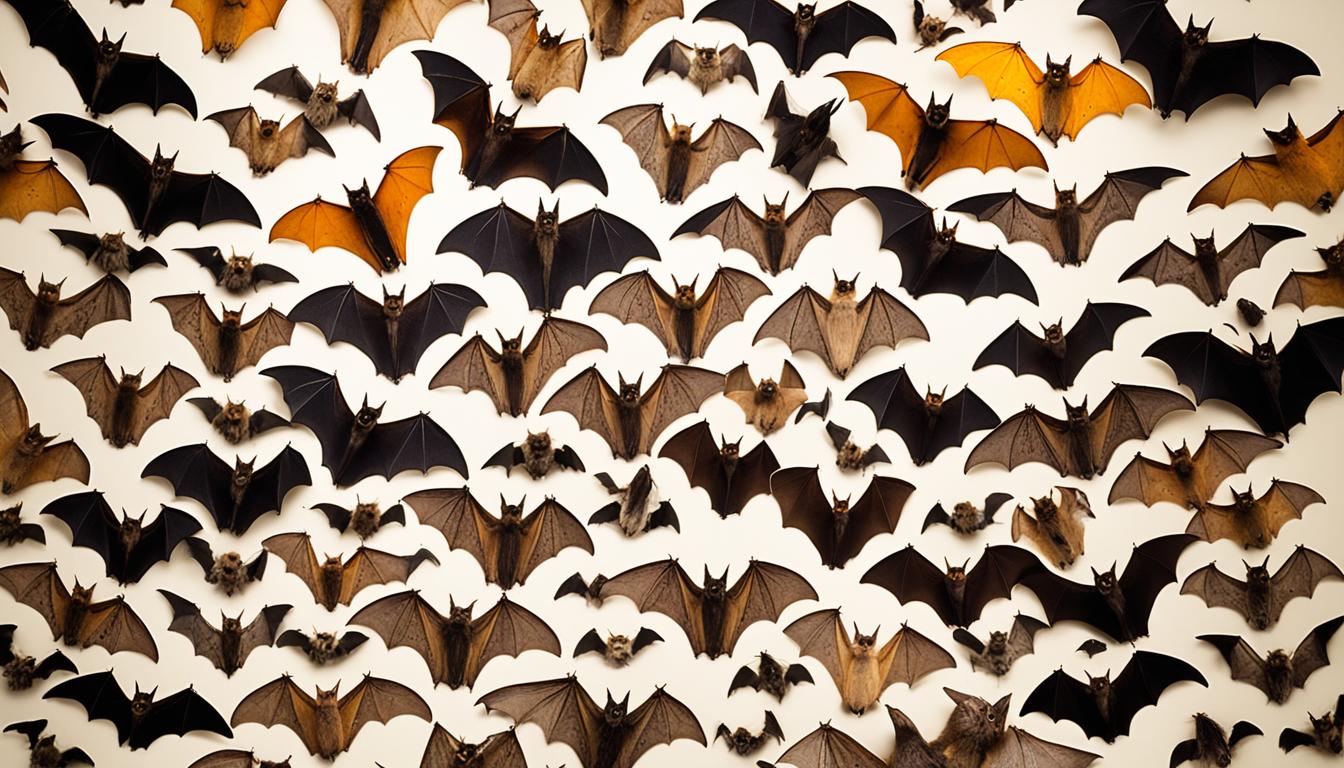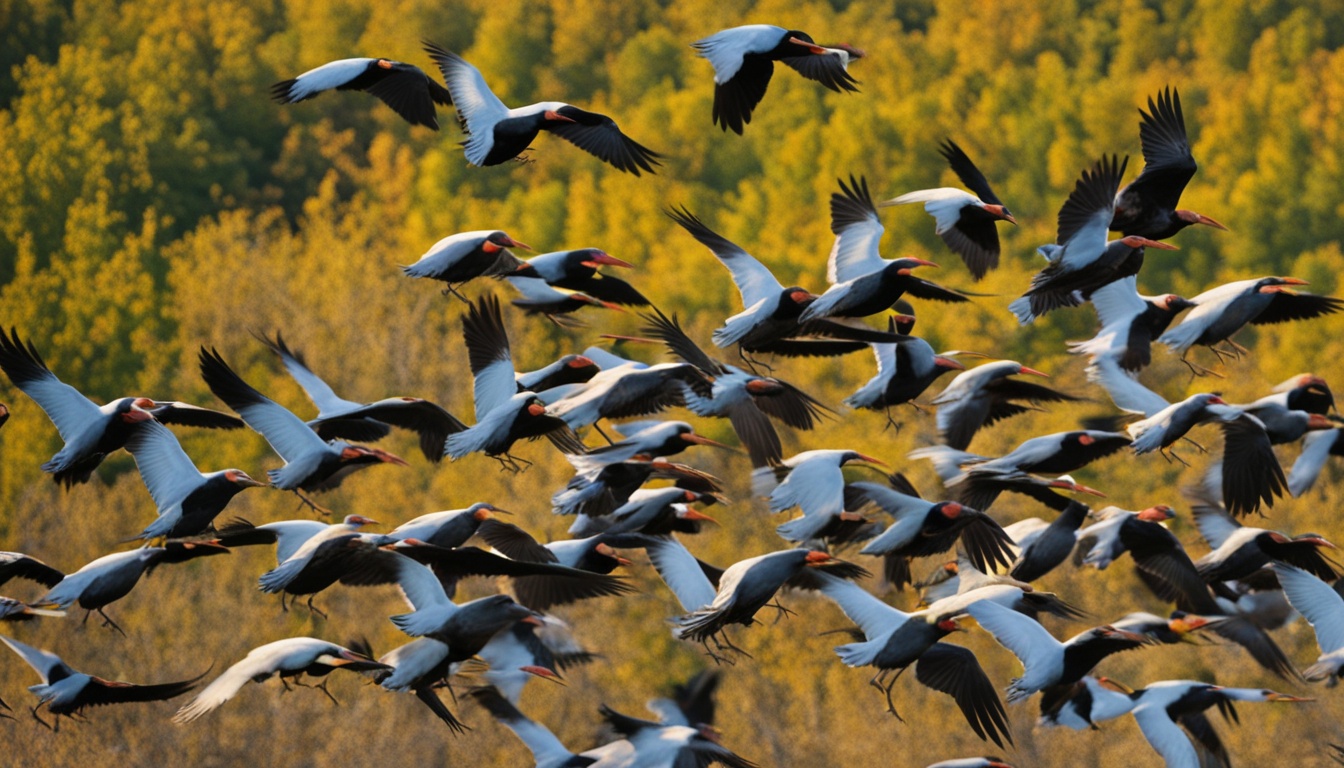Ever thought about why foxes do so well in different places all over the United States? They can live at forest edges and even in big cities. This shows how adaptable they are. But what really helps them live in all these different areas?
The red fox, especially, is great at living in various American habitats. They like places with lots of different plants. This way, they can find plenty of food and places to hide. With this skill, they can live in quiet places or busy city areas. They really like being where there are lots of different plants.
General Characteristics of Foxes in the USA
American fox habitats are very diverse. They have many species, like the red fox. This fox is well-known for its looks and how it acts. This helps it live in many places.
Physical Description
The red fox has bright orangish-red fur, pointed ears, and a big bushy tail. The tail is often white at the end. These features help the fox. The tail gives it balance and keeps it warm. Also, the colors help it hide in its home. This makes it safer.
Behavioral Traits
Foxes have certain behaviors that help them live in different places. They mostly live alone. But, they have areas they call home. These areas can be big or small. It all depends on where they live.
Foxes like being active at night and have sharp senses. They are good at hearing. They also smell things very well. This helps them hunt and stay alive. They also use smells to talk to each other. This helps them keep their areas safe.
Foxes can live in a lot of places. They do well in farms, forests, and even cities. Their ability to adapt makes them very successful. They show how strong and smart they are in many American places where they live.
Fox Habitat Preferences
Foxes can live in many places, showing amazing adaptability. Their ability to live from the city to the wild is key to their survival. By studying fox habitat preferences, we learn how they choose where to live and why. This knowledge helps us see how foxes make their homes in different places.
Adaptability to Different Environments
Foxes can survive in various places, from deep forests to our cities. They blend in well with these different environments thanks to what they eat. They can find food in all kinds of places, showing off their cleverness.
Impact of Food Availability
What they eat plays a big role in where foxes live. Foxes eat a lot of things like small mammals, birds, and even some plants and fruits. Because they eat such a wide range of foods, they can live in many habitats. The availability of food is key in where they decide to make their homes. Understanding this helps us see how the natural world works together to support foxes all over the U.S.
What Types of Habitats Do Foxes Prefer in the USA?
What types of habitats do foxes prefer in the USA is an intriguing topic. It shows how adaptable foxes are to different landscapes. They can be found living in forests, scrublands, farmlands, cities, and by the coast.
Each of these areas appeals to foxes for various reasons. They are drawn to places that offer shelter and plenty of food. This differs depending on the type of environment.
Forested areas are rich with both vegetation and animals to hunt. Scrublands are also good for them. They provide thick covers and plenty of different animals for food.
Agricultural lands attract foxes because of the chance to catch small mammals and birds. Despite being unusual, urban areas are becoming more common homes for foxes. This is because they find lots of food and places to hide around people.
Coastal regions are another example of where foxes can flourish. Here, they find all kinds of plants and animals to eat. This shows just how versatile these creatures are.
Foxes do well in both the wilderness and around people. They pick their living spaces based on many factors. For them, it’s about finding a place with enough types of plants, animals to eat, and things that help them survive.
Forested Areas
Forested habitats are key for foxes in the USA. They provide the perfect mix of vegetation and cover. Foxes adapt their behavior as the seasons change within these wooded spaces.
Types of Forests Preferred
Foxes like mixed forests the most. These forests have both leafy and pine trees, offering many hiding spots and food. Such a mix makes it easier for foxes to live there throughout the year.
Seasonal Habitat Use
In colder times, foxes head to thicker parts of the forest. Here, they find shelter from the harsh weather. But, when it’s warmer, they move to more open areas to eat more easily.
| Season | Habitat Preference | Main Activities |
|---|---|---|
| Winter | Dense Forests | Seeking Shelter |
| Spring | Mixed Forests | Nesting and Foraging |
| Summer | Open Woodlands | Hunting and Raising Kits |
| Fall | Mixed Forests | Preparing for Winter |
Scrublands and Brush
Foxes in the USA love the scrublands fox habitat for its dense undergrowth and rich plants. It provides a lot of cover and great hunting grounds. This mix of features helps foxes find different kinds of food, meeting their dietary needs and making them choose these places to live.
The brush environment foxes enjoy has the right mix of plants they need. It’s a place where they can hunt well and hide from their enemies. This unique environment shows how well foxes can adapt and survive in various places.
These habitats stand out because they offer a lot of different plants. With a mix of bushes and open spots, foxes can hide easily while they hunt. Below is a table showing what types of animals foxes might catch in the scrublands and brush areas of the USA:
| Prey Species | Availability | Hunting Success Rate |
|---|---|---|
| Rabbits | High | 80% |
| Rodents | Moderate | 60% |
| Birds | Low | 40% |
| Insects | High | 90% |
This table shows the wide range of prey available in scrublands and brush environments. It’s key for the survival and success of foxes in these places. It helps us understand why these areas are so important for foxes in the USA.
Agricultural Lands and Pastures
Agricultural lands and pastures are top spots for foxes. They have lots of small mammals and birds to eat. However, farming can make it hard for these animals to find what they need. So, it’s important to learn more about their home needs and how they change to survive.
Impact of Agricultural Practices
Agricultural practices change where foxes live. Fields replacing wild places can limit their food and shelter. But, foxes are smart and find ways to thrive in these new farming areas. They use them for hunting and making their homes.
| Aspect | Positive Impact | Negative Impact |
|---|---|---|
| Food Availability | Increased presence of small mammals | Pesticide use can reduce prey numbers |
| Shelter | Unused land and hedgerows provide cover | Clear-cutting of vegetation reduces nesting areas |
| Landscape Use | Foxes adapt to field patterns | Monocultures limit diverse habitat options |
Foxes living in farm areas show how wildlife and farming can work together. It teaches us about the balance needed for both agriculture and nature to flourish. By understanding and honoring this balance, we can help create a better place for farming and wildlife.
Urban Environments
Foxes are thriving in our expanding cities, showing us their survival skills. They’re finding ways to live in urban areas, making the most of the food and shelter they find.
Adaptation to Urban Areas
Foxes have changed their ways to fit in with city life. They now search for food and make homes in places like parks and gardens. These smart animals have figured out where to go to stay safe and find food.
Benefits and Challenges
Living in cities has good and bad points for foxes. They find a lot of food and there are not many animals that hunt them.
However, they face big dangers from cars and can catch diseases from nearby people and pets. Sometimes, they can upset people by going through trash or living close to homes.
But even with these problems, foxes are finding ways to live in the city. This shows how they can deal with both good and tough situations.
Marshes and Wetlands
Marshes and wetlands are vital for foxes in the USA. They boast rich biodiversity and plenty of water. These areas are perfect for foxes to live and grow.
Importance of Diversity in Vegetation
The mix of plants in marshes is crucial for foxes. Many plant types means lots of food for foxes to hunt. It also offers good hiding spots for them.
Wetlands are filled with many types of living spaces. There are open waters and thick plants. Each area helps foxes survive in different ways. For example, the many plants keep the area’s temperature just right for their food to live.
Think about how different plants in marshes and wetlands help foxes. Here’s a quick look at what each type does:
| Vegetation Type | Role in Habitat | Primary Benefits for Foxes |
|---|---|---|
| Reed Beds | Shelter and Nesting | Provides cover and prey attraction |
| Grasslands | Feeding Grounds | Abundance of small mammals and insects |
| Shrub Layers | Protective Cover | Camouflage during hunting |
| Aquatic Plants | Water Regulation | Supports diverse aquatic prey |
As you see, a lot of different plant types help keep foxes happy. Wetlands and marshes are key places for them to live. It shows just how important the variety of plants is for these animals.
Mountainous Regions
In mountain areas, foxes show amazing adaptability to rough terrains and changes in climate. They face unique challenges, high up. But, foxes are smart. They change how they act and where they live to survive well.
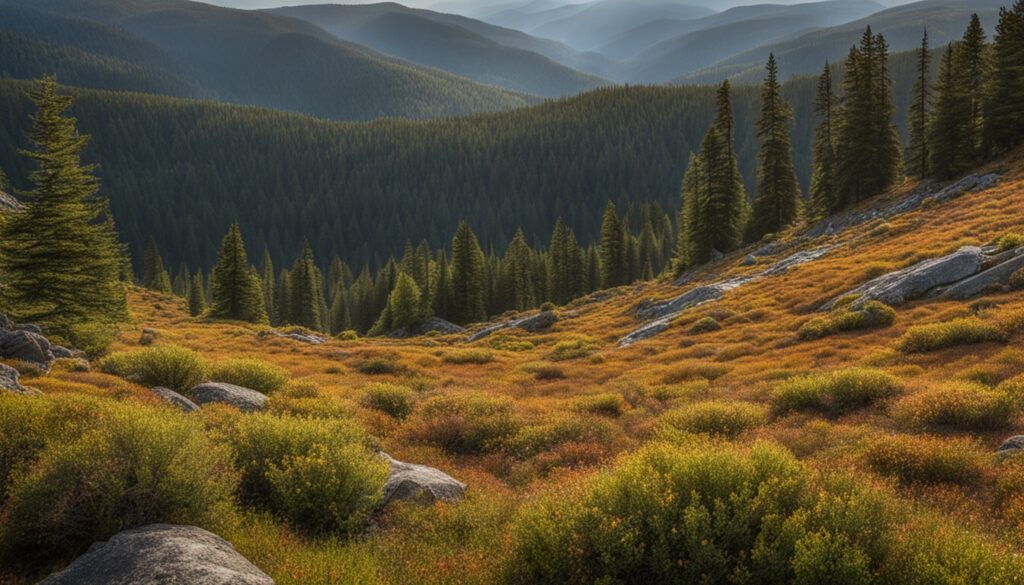
Altitude and Climate Considerations
Foxes in the mountains deal with big height changes. This affects what kinds of animals they can find to eat. In winter, foxes might go to lower places for less cold and more food. Then, in summer, they enjoy the cool and catch more prey up high.
These places have rough land and less air. But that doesn’t stop the foxes. Their fur keeps them warm, and they’re great at going over rocks and steep slopes.
Seasonal Movements and Food Availability
Foxes pick where to live by what’s to eat. Over the year, where prey is changes. So, foxes change too. In winter, they might move to get closer to food. But then, in summer, they aim for places with more kinds of animals to hunt.
This back and forth shows how smart foxes are. It also teaches us a lot about how they do so well in these hard places in the USA.
| Aspect | Details |
|---|---|
| Altitude Effects | Influence seasonal habitat preference based on temperature and food availability. |
| Climatic Impact | Adjust behaviors and elevations in response to changing weather conditions. |
| Seasonal Movements | Shift between lower and higher altitudes depending on climate and food sources. |
| Adaptations | Thick fur for insulation and agile build for navigating rough terrain. |
Coastal Dunes and Beaches
Coastal places are very important for foxes. They offer special benefits and resources at different times of the year. Foxes and these places both change a lot, helping foxes find ways to survive and do well.
Seasonality and Abundance
By understanding how seasons change things in coastal areas, we see how important these places are. For example, at some points in the year, foxes find lots of food. This could be bird eggs or things that wash up from the sea. These times of plenty are crucial for foxes to grow and stay healthy.
Seasons really affect the food foxes can find. They use smart strategies to hunt and get as much food as they can. This ensures they have enough food, especially when they have babies. This helps them have more young foxes survive well into adulthood.
| Season | Food Resources | Fox Activity |
|---|---|---|
| Spring | Nesting seabirds, eggs | Increased hunting and foraging |
| Summer | Marine carcasses, small mammals | Scavenging and denning |
| Fall | Invertebrates, migratory birds | Preparing for winter, cache food |
| Winter | Leftover carrion, limited prey | Survival mode, limited activity |
We must pay close attention to the changing conditions in coastal areas. This helps us protect the wildlife, like foxes, that depend on these areas. With the right knowledge and efforts, we can make sure these coastal spots remain full of life, including foxes.
Conservation of Fox Habitats
Preserving fox habitats in the USA is key to keeping fox numbers up and the balance of nature. Foxes are very adaptable, living in cities and forests alike. It’s crucial to focus on saving their homes because city growth and farms often destroy them. By fixing up these areas, we give foxes a better chance to live and grow.
Protecting where foxes live means not just saving their homes but also fixing damaged places. Actions like planting trees, reclaiming wetlands, and making nature reserves help a lot. It’s vital to keep their main living and breeding spots safe to keep their numbers steady. These efforts stop the harm that people can unknowingly cause to foxes.
Making sure humans and foxes can live together well is also important, mainly in cities. This requires educating people and getting them involved. Teaching how to keep trash safe from foxes and not feeding them on purpose can cut down on problems. Following these steps helps keep a good relationship between us and foxes, supporting their habitats’ care.

